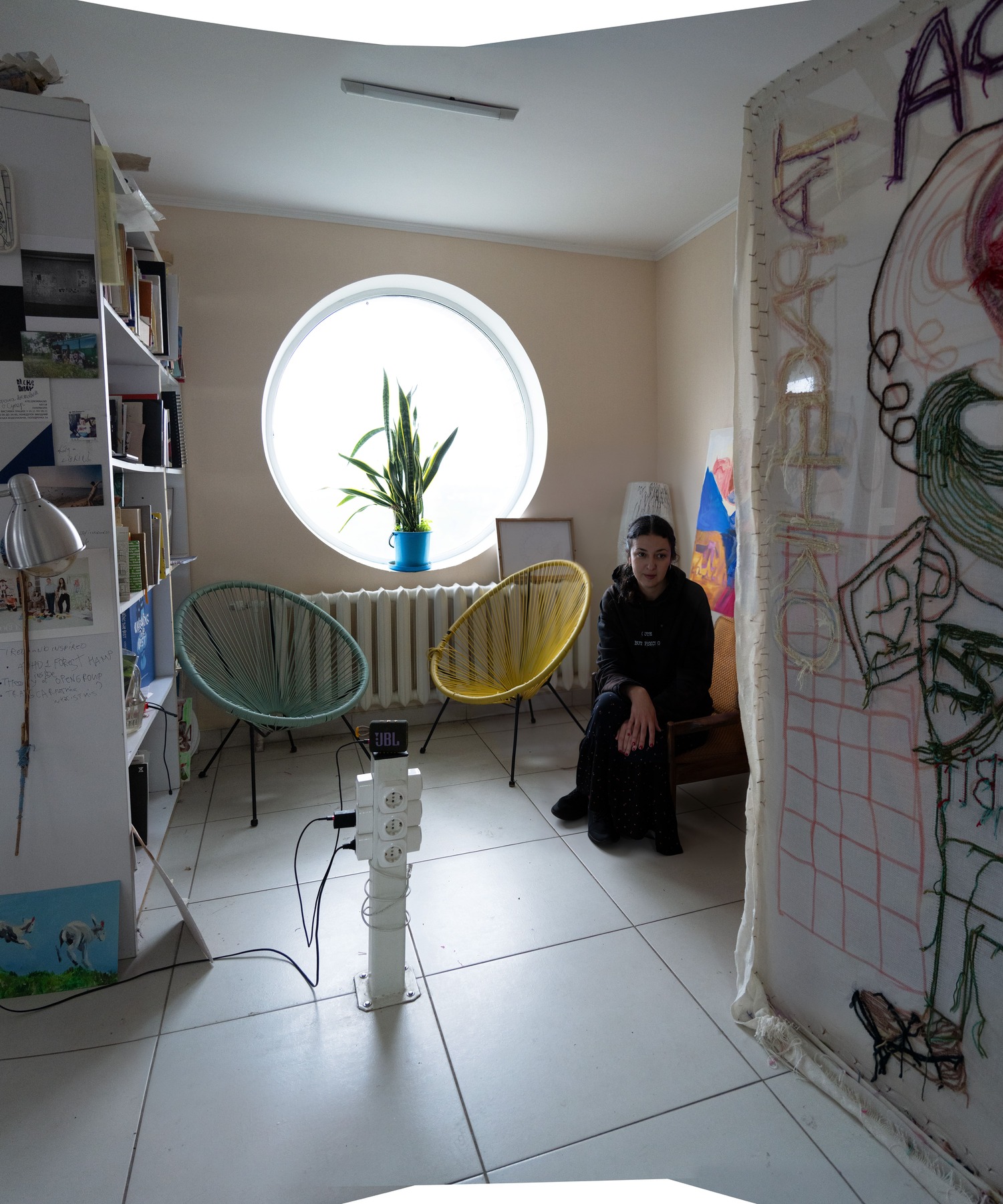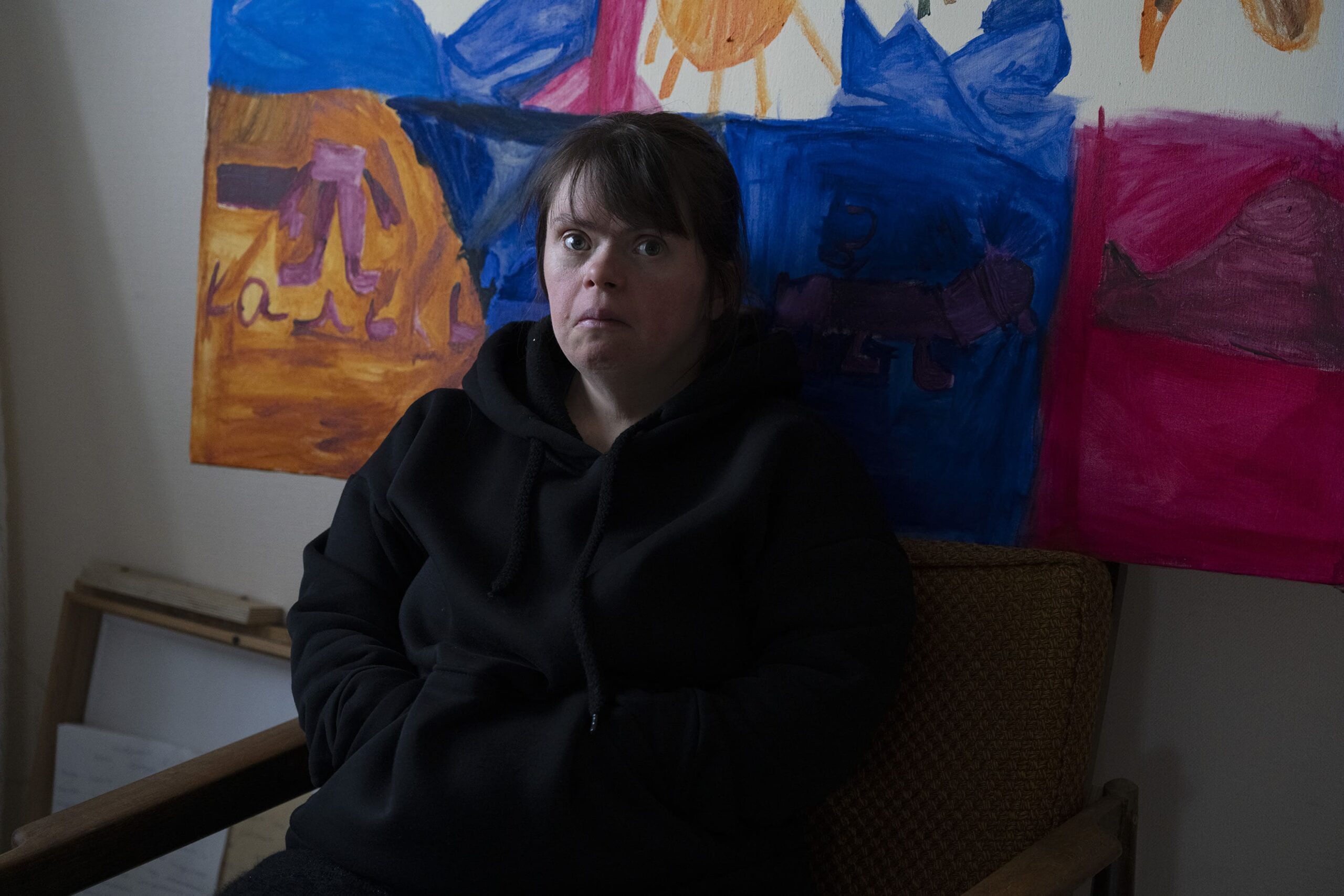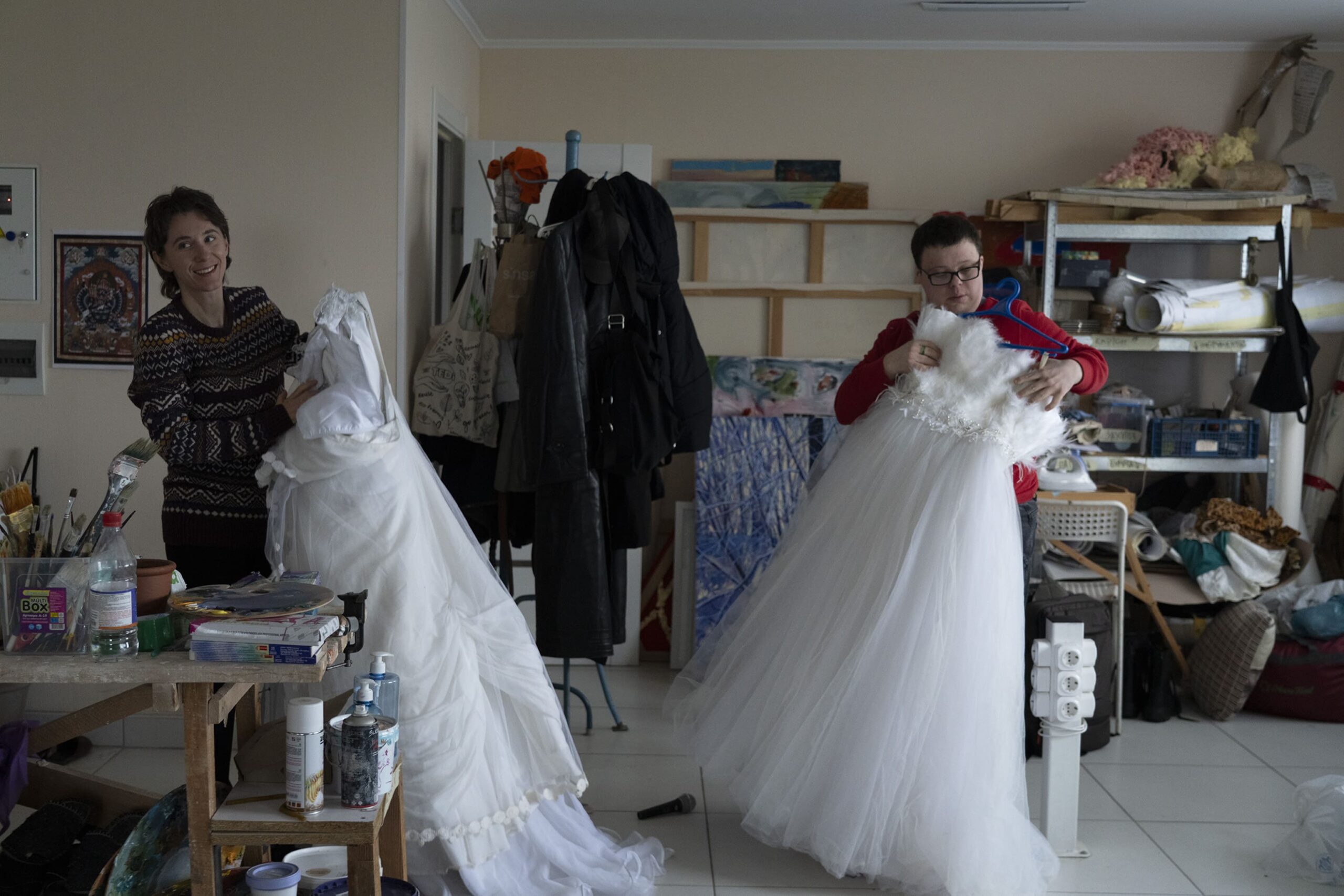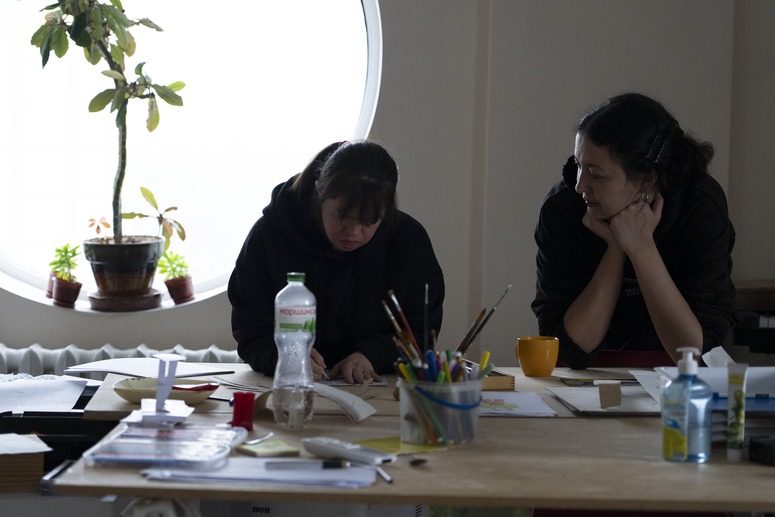Валерія Тарасенко
Valeriia Tarasenko
«Війна поставила нові запитання: як знову бути художницею в Україні? Як повернути творчий імпульс, коли легкість зникла, а сенси змінено?»




З серії «Before the Future», 2025
Друк на Hahnemuhle Photo Rag Metallic, Dibond
Початок війни для Валерії Тарасенко означав затяжне переосмислення себе, мистецької практики, ролі жінки й мисткині у часі кризи.
Після тривалого перебування в резиденціях по всьому світу (у Норвегії, Іспанії, Франції, Німеччині, США) вона повернулася до Києва – міста, яке знає до найменших деталей, і єдиного, де хочеться бути.
Часті переїзди принесли з собою втому від змін, страх невизначеності, відчуття «випадання» з контексту. Повернення в Україну стало способом відновити зв’язок, доєднатися до спільноти, відрефлексувати, що залишилося, а що назавжди втрачено. Війна поставила нові запитання: як знову бути художницею в Україні; як повернути творчий імпульс, коли легкість зникла, а сенси змінено? Відповіді народжуються повільно, у бажанні мати власну майстерню, творити, відчувати процес як опору, розуміти та приймати нову реальність тут, в Україні. Багато знайомих художників/ць виїхали, і виникла потреба заново інтегруватися в артсередовище.
Досвід міжнародного контексту дає розуміння, що українське мистецтво повинно зберігати активність: участь у виставках, бієнале, ярмарках – це не розкіш, а форма виживання спільноти й особливо у часі війни. І митець має бути присутнім, регулярно.
У минулому Валерія поєднувала власну мистецьку практику з викладанням у художній школі. Дев’ять років роботи з дітьми за академічною програмою лише зміцнили переконання: неможливо навчити мистецтву стандартно. Важливо підтримувати мислення, давати матеріали, створювати простір для інтуїтивного відкриття, але не форматувати під чиїсь стандарти.
У реальності війни ці підходи набули ще більшої актуальності. Так вона з колегами працює у майстерні «ательєнормально» – спільному просторі, де вже понад шість років разом творять різні художники/ці, серед них і люди із синдромом Дауна. Утримання майстерні, особливо на початку війни, було вкрай складним, але проєкт вижив завдяки партнерській підтримці та міцній ідейній команді. Зараз допомагає «Patreon» і триває постійний пошук грантових програм.
В «ательєнормально» Валерія працює з художницею Іриною Голобородько, людиною із синдромом Дауна.
Війна, як каже Ірина, все змінила у її житті, але її мистецтво залишилося незмінним. Вона не говорить про втрату натхнення чи можливості творити, вона згадує про те, що насправді втрачати Україну для неї є найважчим.
У майстерні «ательєнормально» творять також Марія Леоненко та Олександр Стешенко. Тут мистецтво стає простором рівності й прийняття: немає поділу чи категоризації, кожен працює у власному темпі, але всі перебувають у спільному полі присутності. У цьому середовищі цінують увагу, повагу та готовність чути одне одного. Саме ці якості, як у мистецьких ініціативах, так і в українському суспільстві загалом, сьогодні допомагають триматися й залишатися людяними.
‘The war posed new questions: how to be an artist again in Ukraine? How to recover creative impulse when lightness is gone and meanings have shifted?’
For Valeriia Tarasenko, the war marked a prolonged rethinking of herself, of her artistic practice, and of what it means to be a woman and an artist in times of crisis.
After several years of residencies across the globe — in Norway, Spain, France, Germany, and the United States — she returned to Kyiv, a city she knows intimately, down to its smallest details — the only place where she truly wants to be.
Frequent relocations had brought with them exhaustion, fear of uncertainty, and the feeling of being disconnected from context. Coming back to Ukraine was her way of restoring connection — to the community, to herself, to what remained, and to what had been irreversibly lost. The war forced new questions: how to be an artist again in Ukraine; how to create when creative lightness had vanished and meanings no longer held? The answers come slowly, from the desire to have her own studio, to create, to feel the process as grounding, to accept and comprehend this new reality — here, in Ukraine. Many of her fellow artists have left, and the need to reintegrate into the artistic environment has become urgent.
Her experience in the international art world brings a clear understanding: Ukrainian art must stay active. Participating in exhibitions, biennials, and art fairs is not a luxury — it is a form of survival, especially during war. The artist must be present. Regularly.
In the past, Valeriia balanced her practice with teaching at an art school. Nine years of working with children under an academic program only reinforced her belief that art cannot be taught in any standardized way. What matters is nurturing thinking, offering materials, and creating space for intuitive discovery — not forcing anyone into a predefined mold.
These approaches have become even more relevant during wartime. Valeriia now works at atelienormalno— a shared studio space where artists with and without Down syndrome have been creating together for over six years. Sustaining the studio, especially at the onset of war, was immensely difficult, yet the project endured thanks to committed partnerships and a tightly bonded team. Today, the initiative continues with the help of Patreon and ongoing efforts to secure grant funding.
At atelienormalno, Valeriia collaborates with artist Iryna Goloborodko, who has Down syndrome.
As Iryna says, the war has changed everything in her life — except for her art. She does not speak about losing inspiration or the ability to create. What she mourns is the idea of losing Ukraine itself.
Other artists at the studio include Maria Leonenko and Oleksandr Steshenko. The space functions as a field of equality and acceptance — no categories, no hierarchies. Everyone works at their own pace, yet all share the same atmosphere of presence. What is most valued here is attention, mutual respect, and the ability to truly listen. These are the very qualities that sustain artistic initiatives — and Ukrainian society as a whole — through this time of rupture and resilience.